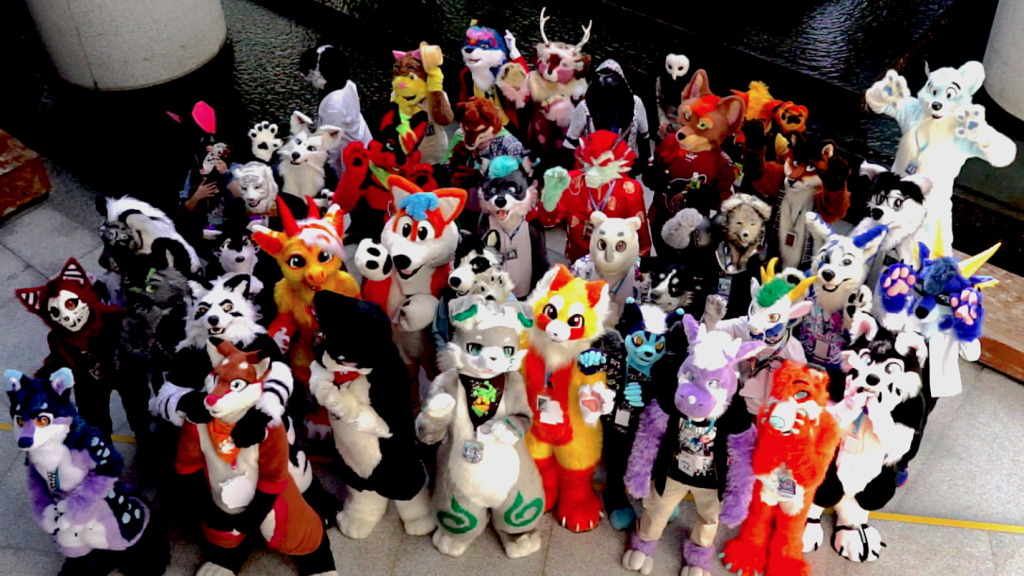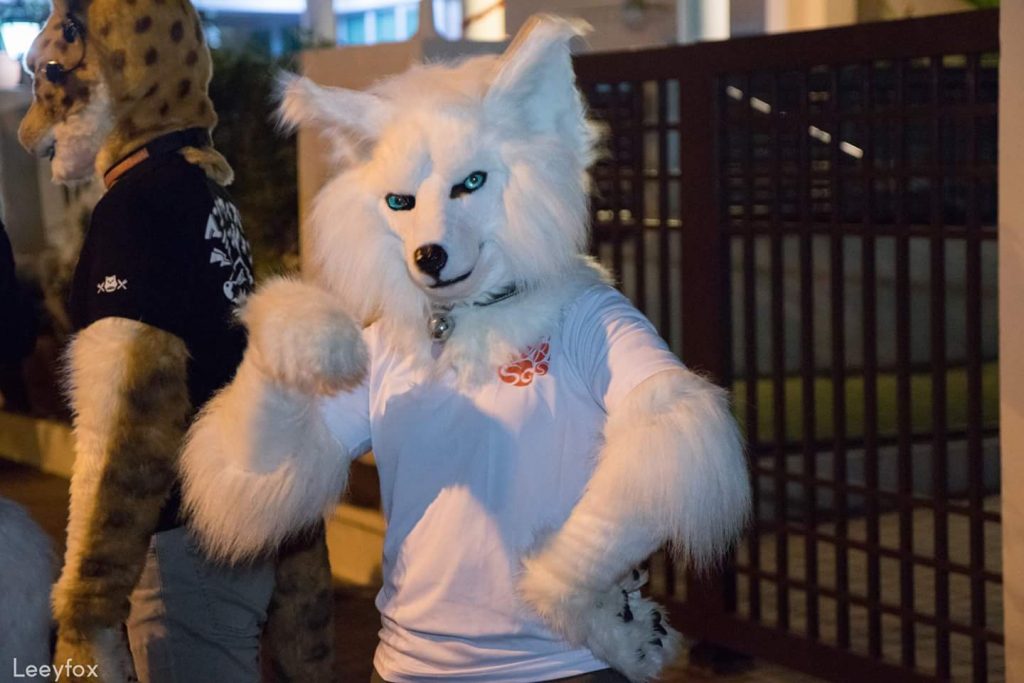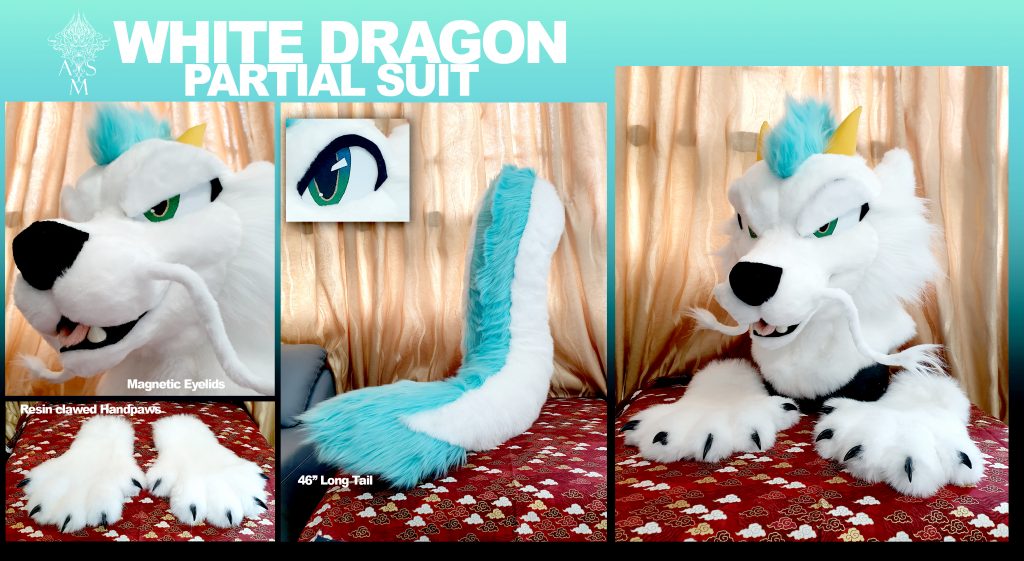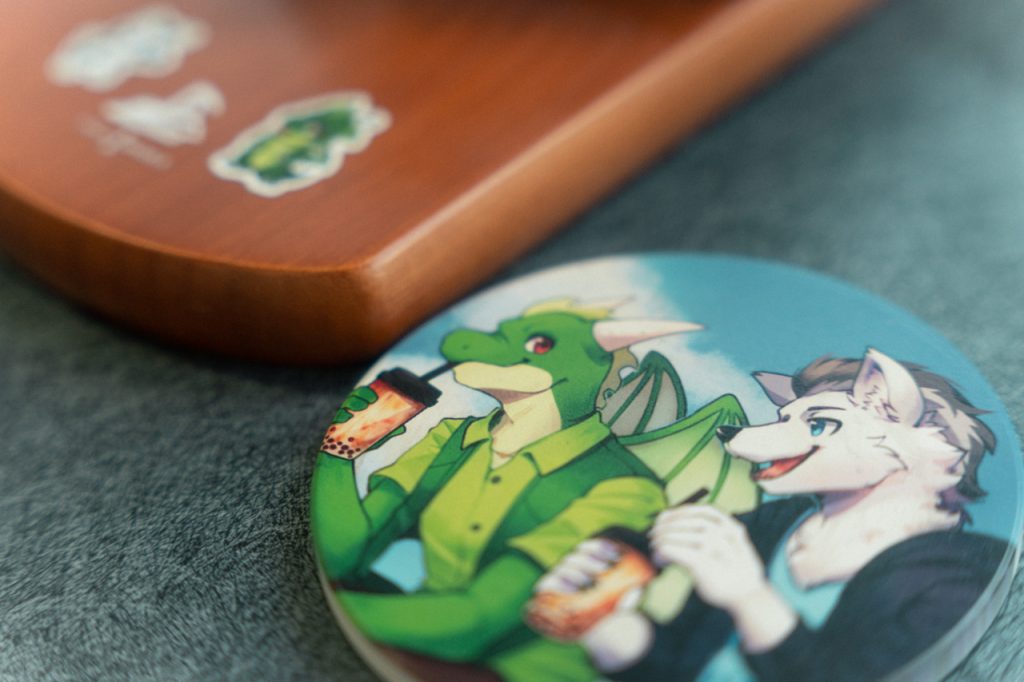Top image: Decro.
All images and videos by Stephanie Lee unless otherwise stated.
The Multipotential Furry: Decro, the charming Arctic wolf
“I write Furry stories as a hobby… and yes, I like to make them romantic,” says Decro*, a Singaporean Furry in his late 20s.
A software programmer by day, after hours, Decro writes Furry fiction and is a live streamer on Twitch, where he plays song requests on his guitar with a virtual Furry avatar generated using computer graphics.
Going by his impressive set-up—equipped with animation software, facial and gesture recognition—Decro takes his streaming endeavour very seriously.
Decro belongs to the local Furry community, a fandom that gathers virtually and in person at conventions, dressed in full animal costumes with human characteristics.
With roots in the early 1980s in the United States, the subculture emerged from science fiction, fantasy, and comic fandoms.
Furries usually keep to themselves—and there’s a reason why they do. Mainstream perception of this community is often rooted in the dogged misbelief that something improper is brewing within. Many might even believe that there’s a sexual component to wanting to dress up as anthropomorphic animals.
But, while Furries look similar to cosplayers—and are often mistaken for them—in truth, they have their own unique fursonas (a portmanteau of the words’ furry’ and ‘persona’) where their personalities complement and inform the fursuits they wear.
For Decro, werewolves were one of his earliest inspirations. It’s evident in his fursona, a charming anthropomorphic Arctic wolf with sky blue eyes. His fursuit head is made of foam, layered with faux fur, resin, and plastic for the eyes.
Decro’s fursuit is intricate enough as it is. But other Furries go the extra mile to add more technical features to their fursuits, like magnetic eyelids (for vivid facial expressions) or even detachable horns.
“I want my fursuit to look as natural to my real self as possible,” he explains, pointing to a birthmark on the bridge of his nose that is also on his fursuit.
“Decro is personalised after my own character traits. It’s like creating a game avatar in real life to navigate the world.”

Little Island Furcon
Decro found his way into the community in 2017 when he joined a Telegram channel for local Furries. The group helped him network and become acquainted with the organisers of Little Island Furcon (LIFC), a convention created by a group of Singaporean Furries.
Eventually, he became an organiser himself. Now, he helps them moderate chats on their channel, which presently has over 200 members.
Usually held in person, the conventions moved online due to the pandemic. The most recent one was organised earlier in May over Discord, where members gathered to play games, attend panels, commission artists, buy and sell merchandise, and chat in hangout rooms.
About 300 furries—both from Singapore and overseas—attended.

While Decro is proud that many Furries from across the world attended their convention, he emphasises that his focus remains on developing it as a space for local furries to connect.
“We will grow, slowly but surely,” he explains.
“Rather than looking at how many people turn up one year, I’d rather count how many people return the following year for the convention. That’s a more important and organic metric to consider.”
The Accidental Furry: Kiba, the White Wolf
While Decro is renowned online, fellow Furry Kiba is well-frequented offline for her costume-making talents.
“I have many fursonas, but many people know me as Kiba, the White Wolf,” Kiba*, a fresh graduate of Nanyang Technological University’s School of Art, Design and Media, explains.
Influenced by Japanese culture, Kiba’s moniker takes inspiration from the kanji character きば (牙), ‘kiba’ meaning ‘fang’.
The 27-year-old is a costume technician at Universal Studios Singapore, where she creates the iconic characters seen on Halloween Horror nights. Outside working hours though, she carves out time to design fursuits for her Furry clients.

Kiba was 16 years old when she went trick-or-treating for Halloween in the Woodlands neighbourhood of Woodgrove. She wanted to go as a werewolf—but because the costumes of werewolves sold in stores were expensive, she thought she’d experiment with crafting one herself.
The only affordable fur colour she could find then was white, which also happened to be her favourite colour. So she purchased her first piece of fabric and worked on her first fursuit using only a hot glue gun, needles, and balls of thread.
“I wore the same outfit to a local anime convention held many years ago at White Sands—some Furries approached me to ask if I was one of them,” she recalls. At that time, she wasn’t aware of the existence of the Furry subculture.
Word soon spread of Kiba and her self-made costume. Shortly after, she started receiving requests from local Furries asking her to design their fursuits.
As business picked up, she considered making a living out of her passion which led to the founding of Animagus Studios in 2012, Kiba’s very own Furry costume couturier.
Animagus Studios, Where the Perfect Fursuit Comes to Life
Kiba brings me through the creative process of making fursuits for her clients. First, they send over a photo reference of the design they have in mind. She then guides her clients through the process of choosing various fur colours and physical characteristics of the costume.
With a detailed plan in hand, she begins the process of making the fursuit, broken down into three main stages: sculpting, patterning, and furring.
The faux fur she uses is usually shipped from the United States, contributing to the hefty price tag behind her costumes. Kiba’s creations start at USD$2,000.
“What is the most difficult stage of the process?” I ask Kiba.
“The hardest part has got to be sculpting,” she shares, “because the measurements must be accurately done before proceeding.”





The design features of the fursuits she makes have grown more complex over the years. Kiba now receives special requests such as incorporating features like zips on paws to create a seamless appearance (like a onesie), articulated tails that naturally move with one’s body, and movable jaws that move as authentically as possible.
Such details are necessary, Kiba asserts. “Each fursuit is unique to every individual because of the meaning one fondly attaches to it.”
Still, the commissions are far and few in between. Some months can be good; other months can yield no returns. But when there is a commissioned project, the customised works can fetch up to USD$9,000, depending on the price of materials, intricacy, and the time required.
Kiba tells me that these price tags have led people to assume that she is rich—but that’s not the case. The reality is that she still needs to rely on other projects. Her day job making fursuits doesn’t bring in a consistent income.
The Creative Furry: Zenogaire, the Deceptive Dragon
In my research for this story, I joined several Furry Telegram groups in a bid to understand the people in this community. That’s when I saw a profile picture of a Toothless plushie, a character from Dreamworks’ How To Train Your Dragon, baring its teeth. I reach out to the user, who tells me they go by the name Zenogaire.
Zenogaire*, a 22-year-old graphic designer and video editor who identifies as non-binary confesses that they have self-esteem issues.
“I’m scared of talking as I fear being judged,” they share.
Zenogaire’s name is an internet persona, and they tell me that the word ‘gaire’ comes from the Scottish Gaelic word, ‘breugaire’, which essentially means liar. They explained that being a Furry can sometimes feel like a lie, as what others see is just a facade.
It becomes apparent that most Furries, Zenogaire included, find protection behind their Furry identities. This shield allows them to adopt and experiment with different personas—or alter egos—whenever they desire.
It also helps those who are less confident express themselves without reservations or judgement.

For now, Zenogaire hides behind a virtual fursuit, as they don’t have a physical one yet. “It’s too expensive,” they say, shaking their head. “Besides, I am still designing Zenogaire.”
I take a look at their hand-drawn design. It’s a majestic dragon with extended fingers and long, robust claws, possessing characteristics similar to a dinosaur.
“I have loved dinosaurs since I was a kid,” Zenogaire confesses. “I even wanted to be a palaeontologist but never had the chance to.”
A Safe Space for All Sexualities
Decro, who is bisexual, tells me that the Furry fandom consists of many people like Zenogaire who don’t conform to society’s standard definitions of identity. There are also Furries who belong to the LGBTQ community, as well as people with diverse needs and preferences.
“In a sense, it feels like a whole bunch of misfits or minorities coming together,” he smiles.
In Singapore (and many other conservative countries for that matter), finding a same-sex partner can be challenging. In turn, many Furries turn to creative formats to express their bottled-up emotions.
Perhaps this explains why there is a lot of art and literature on Furry platforms depicting romance and sex between furries. Some may see this and assume that the entire fandom is purely focused on sex. But it’s much more nuanced.

“Popular culture likes to paint us as sex maniacs,” Decro reveals, referring to the many articles online that depict Furries as a hypersexualised community.
While it’s true that there are a number of fetish niches within the Furry subculture—for example, sex between furries is called yiffing, named after the sound foxes make when mating—there are many others whose interest in the Furry fandom is entirely non-sexual.
“We have to keep in mind that many Furries don’t have other spaces to explore and talk about their sexuality,” Decro shares by way of explaining the existence of such groups within the community.
“Some Furries like to have sex in their fursuits, so people think that all Furries do that,” Decro says.
“Personally, I wouldn’t want to dirty a fursuit that I paid S$3,000 for.”

What is Community?
My conversations with Decro, Zenogaire and Kiba lead me to think about what it means to belong in a community. Is belonging about finding a place that is nurturing, where we are accepted for who we are, or one where we receive unconditional love?
For queer individuals, finding safe spaces in Singapore is difficult as it is. Because of this, they often find solace in small communities on the fringes, where they can be accepted for who they are.
One of these safe spaces happens to be the Furry community, an inclusive space where real identities don’t matter and where all members are treated with dignity.
Currently, Singapore is still figuring out how to pave the way to making the country a more inclusive and supportive society for all who call the island home. And with talks of a possible repeal of Section 377A, that reality may come a little sooner than many expect.
But until then, Decro says, “the furry community will continue to be a safe and open space for all.”
* denotes the use of a pseudonym







